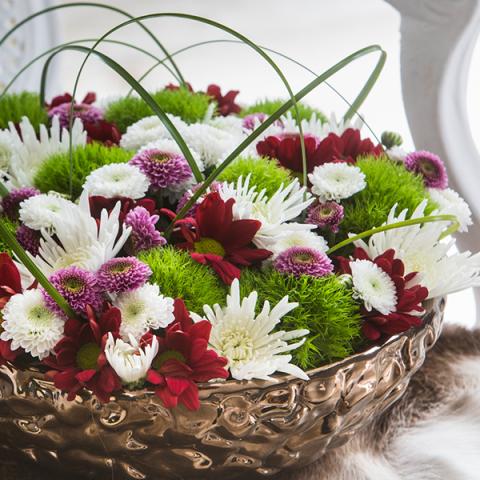What is Botrytis and how to avoid it?

Botrytis cinerea (grey mould) is a fungus which causes a loss of quality in flowers like Rosa, Chrysanthemum, Gerbera and Lisianthus. The place of origin, season, hygiene during processing and storage, weather conditions and climate control play an important role in the appearance and development of Botrytis. The fungus thrives on both living and dead plant materials. The infection starts when miniscule little mould spores, spread through the air. Starting as a little white speck (‘pock’) on the flower petals, it spreads right to the bottom of the flower. It gradually changes its colour to brown and finally all the petals fall off. In order to move, these spores need moisture. Condensation on the bud/flower and packaging is often enough for the Botrytis spores to quickly develop.
Is botrytis an irreversible condition?
Once shifted from the ‘pock stage’ into brown spots, the process is irreversible. The infected flower petals are often removed by hand. This, however, does not guarantee that the fungal infection has not already damaged the rest of the petals. Throwing the flower away then becomes the only remedy to prevent further infection. Since the infection starts in an earlier phase of the distribution chain and the spores may already be germinated, the florist and the consumer, unfortunately, can’t do anything except throw away infected flowers to prevent further spreading of the disease.
What can you do?
Post-harvest phase:
- The key to the avoiding Botrytis is prevention of infection on the one hand and prevention of germination of the spores, on the other. To do so, you have to avoid condensation on the flower buds/blooms.
- Remove dead plant material from greenhouses, sorting areas, work rooms, displays and cold stores as much as possible.
- Remove infected material immediately from batches.
- Avoid condensation due to big temperature changes (continuous opening of the cold store doors), spraying the flowers and flowers staying wet for extended periods in closed/tight packing. If the cold store door must be opened and closed often, set the temperature at 10°C during the day and at 5°C at night. A somewhat higher, but even temperature is better than large fluctuations.
- Always pay attention to hygiene and regularly disinfect the walls and floors.
Conditioning phase:
- Infection with botrytis often happens early in the chain. Pay attention when buying flowers.
- Buy flowers from sources that are trustworthy and known for their quality.
- Check the presence of the so-called ‘pocks’ at the time of purchase.
- Pull the packaging materials down after delivery and during cold storage in order to allow the flowers ‘to breath’ and air circulation to be at its optimum.
- Work hygienically: clean and disinfect tables, knives and cutting tools at least on a daily basis.


